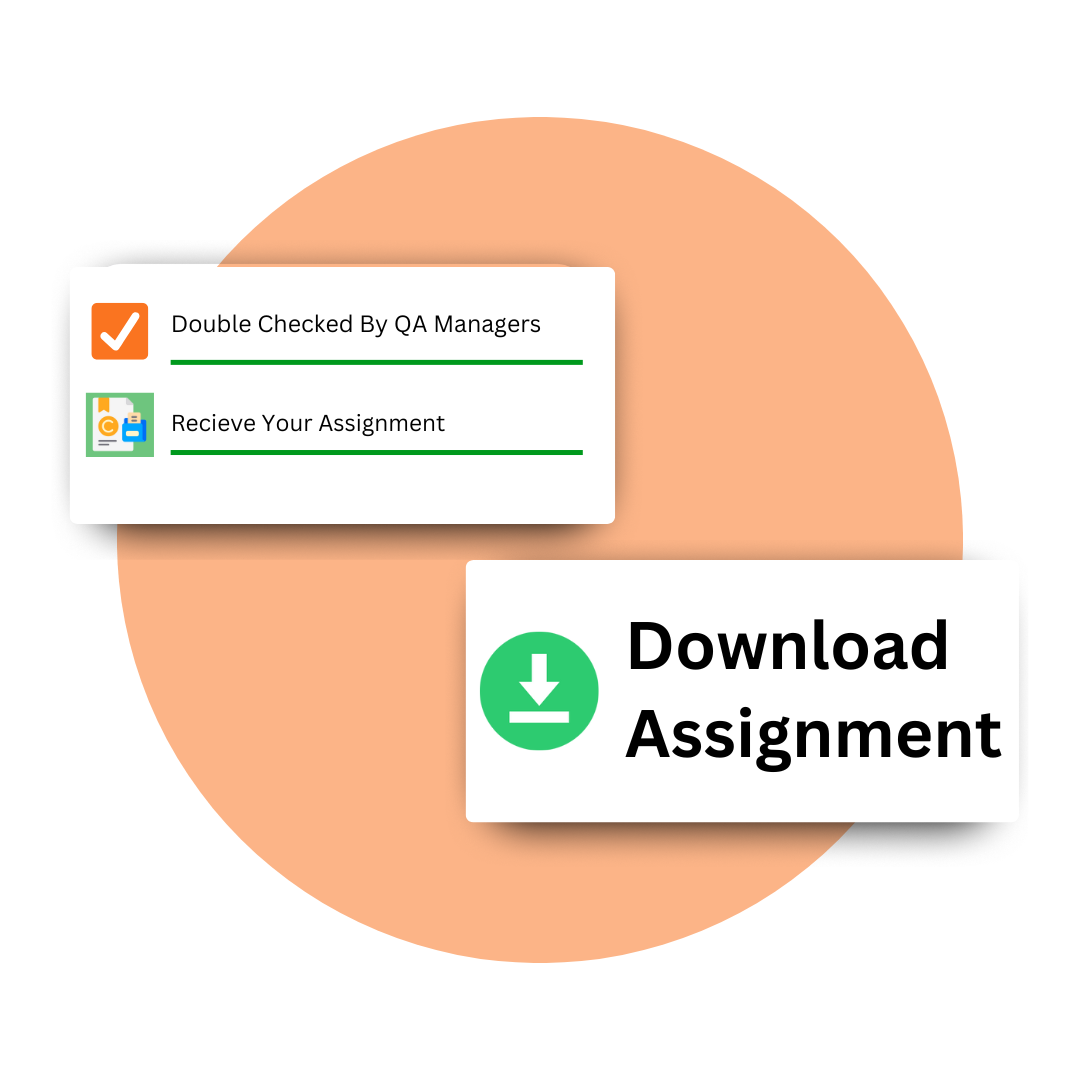We know that you are burdened by each subject assignment, and you don’t have much time. Follow these steps and get your assignment done.

Fill out the form providing assignment details. Once we review it, we will send you a quote based on your assignment.

Once you get that quote, pay the amount and choose a suitable expert for your assignment.

The final copy of your assignment will be sent to your email; download it, and you are all set to submit your paper.
We ensure the on-time delivery of quality CIPD Level 5HR01 assignments irrespective of how strict the deadline is. Hire us for a smooth academic journey.
Wondering, "Can I pay someone to do my Essentials of People Practise Assignment from scratch?". Hire us for 100% original assignments crafted by genius minds.
If you're not happy with the assignment solution, we'll let you know and provide free changes till you are.
We don't believe in playing any hidden charges. Get the best price by hiring us as our checkouts are safe.
Are you looking for UAE academic writers to provide quality assignment help in writing assignments? Then you have reached the best place. You are free to hire an assignment writer in UAE from an expert with complete knowledge of various topics to serve your needs. So if you need assistance from us then, just say ‘Write my CIPD assignment’ as we will give you quality work on time. We have some of the best assignment helpers for our students to help you with your paper, no matter how complex or urgent it may be.
Place your order and get discounts on CIPD Level 5 assignments in the UAE! Get your work done by professional writers who ensure that all instructions are followed while providing you with plagiarism-free essay writing within the deadline.
Employee involvement refers to the ways employees are challenged to contribute ideas, feedback, and suggestions about their work. Employee participation means that employees have a more involved role in the decision-making processes, such as membership in committees or teams. These two approaches facilitate employees’ relationships with management, establishing trust, open communication, and collaboration among individuals, leading to improved morale, motivation, and performance in the workplace.
The third category of union employee representation is formal groups such as labor unions, which have elected representatives to bargain on the workers’ behalf on better wages and benefits and working conditions. Non-union employee representation falls in alternative forms where employees are represented but by works councils or employee forums rather than unions. While non-union representation might be more flexible, this very characteristic means it does not have the legal status and organizing principle of unions. Generally speaking, unions hold the better bargaining position in collective bargaining, and therefore, both strive to ensure that the voices of employees are brought to the table; however, union representation is more conventional and legally able.
With employee voice, there is a large relationship between an Organisation’s performance and employees. Employee voice represents how employees can voice their opinions, concerns, or ideas about the working processes and decisions made. This has resulted in higher job satisfaction, motivation, and engagement when employees feel heard and valued. All this sums up into better output and enhanced productivity. Early detection of issues leading to quality decision making and innovation, has been positively attributed to the encouragement of employee voice. Organisations with open communication and the influence of employees have lower turnover higher morale and effective problem solving hence leading to the Organisation’s performance.
The concept of better working lives is the development of a good work environment that catalyzes employees’ well-being, job satisfaction, and a tie of both work and life. This ensures that people in the Organisation are valued, respected, and helped in jobs. Strategies that an Organisation can use to design better working lives include flexible working hours; chances for professional development; inclusive workplace cultures; and fair pay with good benefits. In addition, open communication, providing awareness about mental health, and providing a safe supporting environment are also key factors in enhancing the work experience of employees. With that design of the workplace, Organisations can perform well towards more engagement, retention, and productivity by the employees.
While organisational conflict and misbehaviour are two different issues in the workplace, these two must be explained one by one as follows
In summary, whereas constructive solutions may be found for some conflicts that can normally occur within work relationships, generally speaking, misbehaviour tends to be a breach of expected conduct.
Emerging trends in workplace conflict and industrial sanctions include:
Third-party conciliation, mediation, and arbitration: The basic differences between the two are as under:
The three methods differ according to control and finality: conciliation and mediation are less controlling, whereas the outcome of arbitration is final.
The principles of the law on common law unfair dismissal regarding capability and misconduct matters are about fairness and transparency as much as the employees are concerned.
Good grievance handling encourages a healthy work environment, as it is less likely that grievances may become full-fledged conflicts, and keeps fair and transparent treatment procedures for employees. The response and solution of grievances of employees enhance the credibility of an Organisation among employees, elevate morale, and minimize legal conflicts. Proper grievance handling also increases the feeling of respect and worth among employees and has a beneficial impact on general performance and a healthy working culture.
We have the best and most satisfactory services. But why do we trust you? Let’s check UAE students' feedback
A
Aisha Rahman

I was struggling with my CIPD Level 5 case study, but the team at cipdassignmenthelper.ae provided invaluable assistance. Their expert insights and structured approach helped me achieve a high grade. I couldn’t have done it without their support!
M
Mohammed Zayed

The support I received for my CIPD Level 5 assignments was exceptional! The writers understood the requirements perfectly and delivered work that exceeded my expectations. I felt confident submitting my essays, knowing they were top-notch.
M
Mansoor Ali

I was struggling with some CIPD Level 5 concepts at London American City College, but the CIPD Assignment Helper clarified everything. Their assignments are detailed and thorough, and my confidence has skyrocketed!
A
Asma

The experts at CIPD Assignment Helper were friendly and knowledgeable. Studying CIPD Level 5 at the University of Wollongong in Dubai is tough, but their support helped me stay on track and succeed in my assignments.
H
Hassan Raheem

Studying CIPD at Blue Ocean Academy in Dubai is demanding, but CIPD Assignment Helpers made it so much easier. They handled my CIPD Level 5 assignments professionally and provided the best assignments that made me stress-free of assignments.
Z
Zayed Hussain

CIPD Assignment Helper is a budget-friendly option for my CIPD Level 5 assignments. The quality they give for the price is unbeatable. I got excellent grades and I’ll use them again.
Do you have a problem with your CIPD Level 5HR01 assignment? Call for the required help now!
